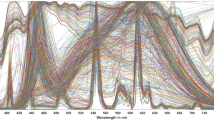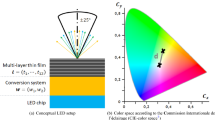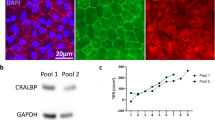Abstract
WE have shown1 that the impression of brightness produced by a light ray which forms an image on a fixed area of the retina depends in high degree on the position of entry of the ray in the eye pupil. For the ratio of the apparent brightness for peripheral entry to the apparent brightness for central entry, values as low as 0.2 were found for white light and foveal vision. The following new features of the phenomenon have been revealed by later work:
This is a preview of subscription content, access via your institution
Access options
Subscribe to this journal
Receive 51 print issues and online access
$199.00 per year
only $3.90 per issue
Buy this article
- Purchase on SpringerLink
- Instant access to full article PDF
Prices may be subject to local taxes which are calculated during checkout
Similar content being viewed by others
References
Stiles and Crawford, Proc. Roy. Soc., B, 112, 428 (1933).
Author information
Authors and Affiliations
Rights and permissions
About this article
Cite this article
STILES, W., CRAWFORD, B. Luminous Efficiency of Rays entering the Eye Pupil at Different Points. Nature 139, 246 (1937). https://doi.org/10.1038/139246a0
Issue date:
DOI: https://doi.org/10.1038/139246a0
This article is cited by
-
Unification of Electromagnetic Effects in Human Retinal Receptors with Three Pigment Colour Vision
Nature (1969)
-
Zur Kenntnis des physiologischen Apertur-Farbeffektes Stiles-Crawford-Effekt II. Art
Die Naturwissenschaften (1943)



